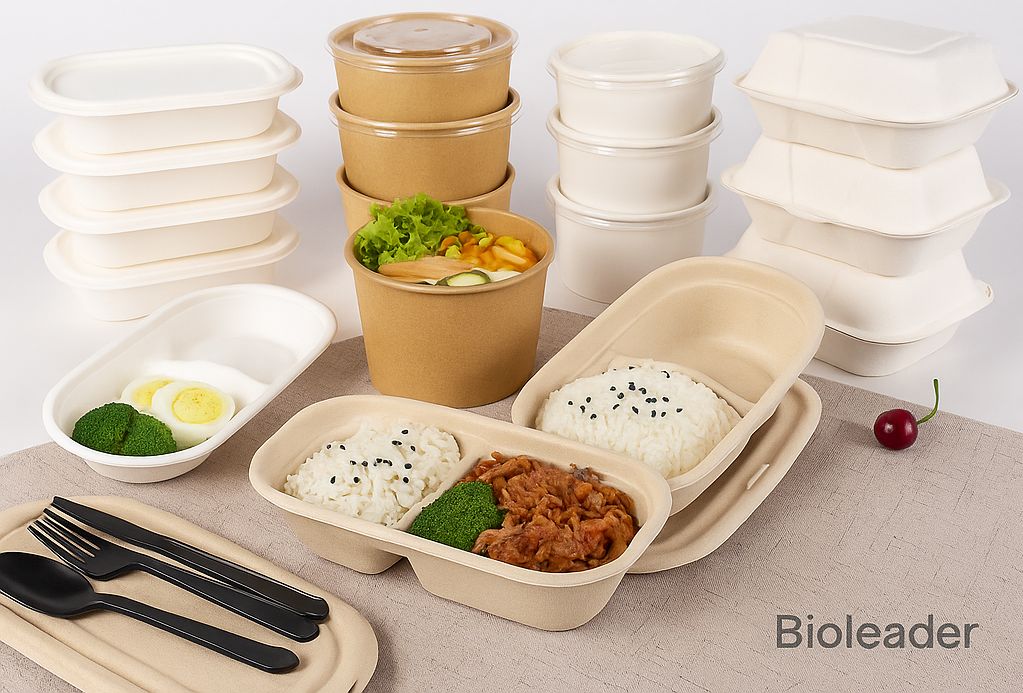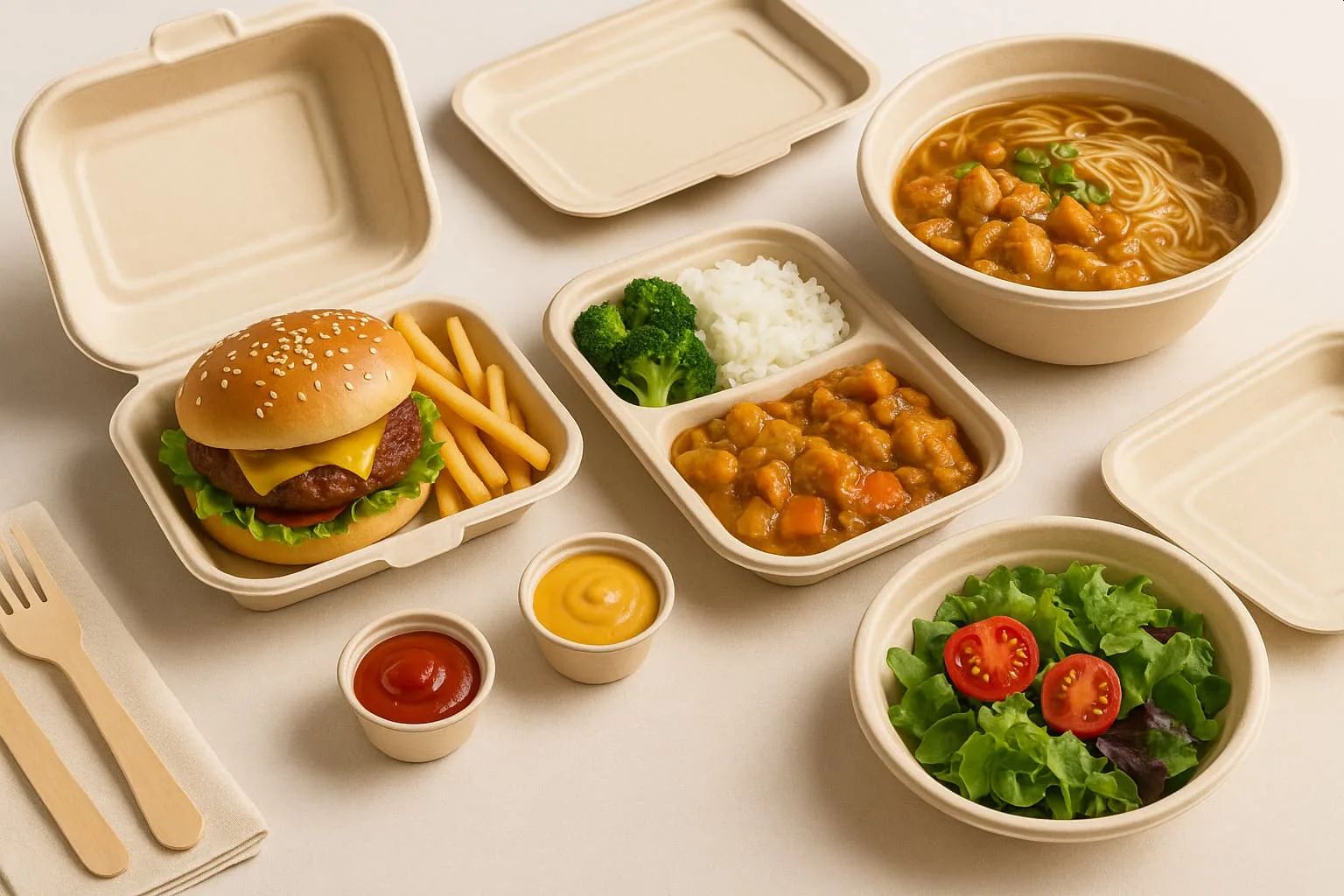“Why did we lose another catering contract?” asked the café owner.
“The food was great,” replied the manager, “but the client complained the takeout containers leaked and collapsed before the meal was finished.”
“So our food was perfect, but the packaging ruined everything?”
This small but costly mistake happens daily across the foodservice industry. The truth is, not all eco-friendly containers are engineered for performance under real-world conditions. Businesses need solutions that balance durability, compliance, and compostability—and that’s where sugarcane bagasse packaging sets a new standard.
The Global Push Away from Plastic

Rising Regulations: According to UNEP, over 120 countries have restricted or banned single-use plastics, forcing businesses to adopt compostable and biodegradable alternatives.
Changing Consumer Behavior: A 2024 Nielsen study revealed that 74% of consumers actively seek restaurants using sustainable food packaging. Failure to meet this demand risks customer churn and reputational damage. This is why operators are increasingly sourcing biodegradable food containers wholesale, ensuring compliance while scaling sustainability.
Why Cheap “Green” Products Fail
Weak Engineering: Many low-cost alternatives warp under heat, absorb condensation, or collapse when stacked. These flaws lead to complaints and refunds.
Scientific Data: A Cornell University study on sustainable food packaging found that fiber density and molding process determine structural durability, with engineered sugarcane pulp outperforming generic paper plates by up to 35% in strength. That’s why reliable suppliers focus on take-out containers wholesale—designed to withstand hot curries, saucy pastas, and greasy stir-fries without failing.
Bagasse: From Waste to Winning Material
What Is Bagasse?
Bagasse is the fibrous byproduct of sugarcane extraction. Instead of being discarded, it is molded into strong, compostable packaging.
Advantages
- Durability: Handles hot and oily foods without collapsing.
- Eco-friendly: Fully compostable in industrial facilities within 90–120 days.
- Renewable: Derived from annually harvested crops.
Bioleader® has become a leader in this space, offering a wide bagasse food container collection that balances eco-responsibility with functional performance.
Case Studies: Real Impact in Foodservice

- University Dining Program: After switching to bagasse containers, packaging-related complaints fell by 78%, and compost diversion increased by 250%.
- Delivery Startup: Migrating to bagasse bowls cut spillage incidents during transport by 65%, leading to a measurable rise in customer ratings.
- Corporate Catering: Bioleader® containers enabled a zero-waste event program, reducing landfill contributions by 90%.
Industry praise has highlighted Bioleader®’s sugarcane bagasse tableware for setting higher benchmarks in both design and durability.
The Business Case: Why Entrepreneurs Must Care
ROI Beyond Cost-per-Unit
- Customer retention: Better packaging means fewer complaints.
- Premium branding: Eco-conscious packaging attracts younger, sustainability-driven consumers.
- Compliance: Staying ahead of regulations avoids fines and bans.
KPIs to Track
- Refund requests tied to packaging failures.
- Service efficiency (speed of stacking and sealing containers).
- Composting diversion rate vs. landfill.
Best Practices for Businesses
- Pilot real-world tests: Try packaging with your hottest and greasiest menu items.
- Standardize SKUs: Reduce complexity with uniform lids and sizes.
- Validate certifications: Ensure EN13432 or ASTM D6400 compostable compliance.
- Educate staff and customers: Proper waste sorting maximizes compost success.
- Promote eco-packaging: Highlight sustainable practices in marketing campaigns.
Frequently Asked Questions
Are bagasse containers microwave-safe?
Yes, high-quality bagasse packaging is safe for moderate reheating without warping.
How long does it take for bagasse containers to decompose?
In industrial composting facilities, around 90–120 days.
Do compostable takeout containers cost more?
Slightly more per unit, but savings come from fewer complaints, brand uplift, and compliance.
Can bagasse containers handle oily or soupy foods?
Yes, engineered products resist grease and condensation, making them suitable for curries, ramen, and stir-fries.
Why choose Bioleader® over generic alternatives?
Because Bioleader® provides certified, performance-tested products trusted by caterers, restaurants, and delivery services worldwide.
Conclusion: Returning to the Opening Scene
The café owner’s frustration wasn’t about food—it was about packaging. That fatal detail cost them contracts and credibility.
With Bioleader®’s biodegradable food containers wholesale, take-out containers, bagasse food containers, and sugarcane bagasse tableware, businesses can deliver meals that are not only delicious but also secure, sustainable, and reputation-proof.
In the world of eco-conscious dining, packaging is no longer an afterthought—it’s part of the meal experience itself.


